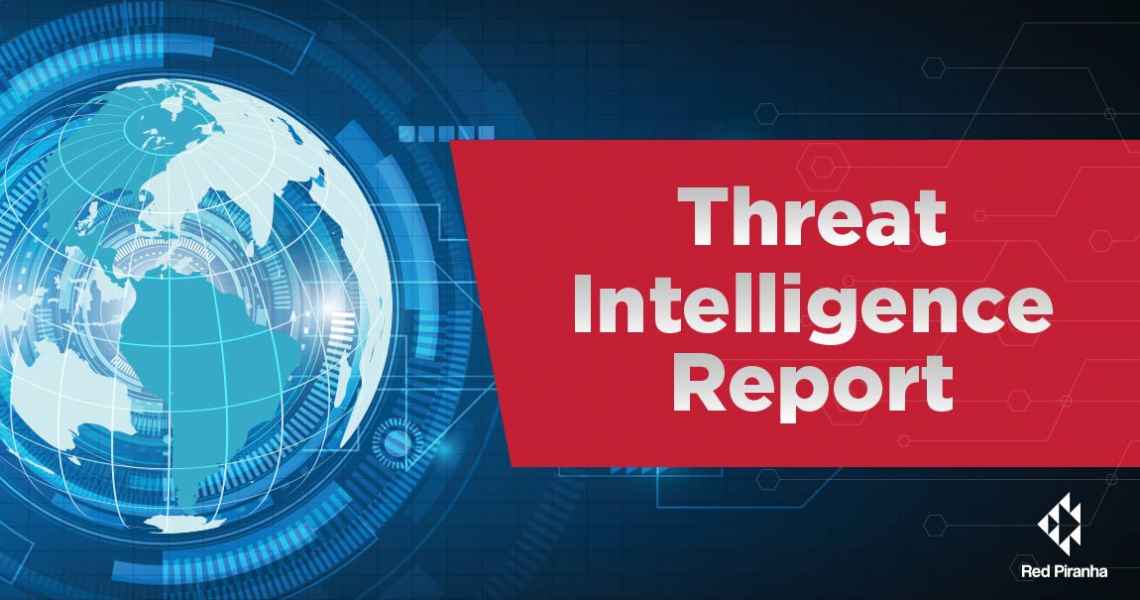
TRENDS
The top attacker country was China with 3875 unique attackers (36%). This represents an important increase of 5% comparing to previous week.
The top Exploit event was Miscellaneous with 50% of occurrences.
The top Trojan C&C server detected was Formbook with 8674 instances detected.
TOP ATTACKER COUNTRIES
|
COUNTRY |
OCCURRENCES |
PERCENTAGE% |
|
China |
3875 |
36% |
|
United |
1749 |
16% |
|
Vietnam |
590 |
5% |
|
India |
585 |
5% |
|
France |
496 |
5% |
|
Republic of Korea |
477 |
4% |
|
United Kingdom |
418 |
4% |
|
Brazil |
399 |
4% |
|
Indonesia |
379 |
3% |
|
Russia |
377 |
3% |
|
Taiwan |
251 |
2% |
|
Thailand |
251 |
2% |
|
Canada |
205 |
2% |
|
Italy |
166 |
2% |
|
Germany |
155 |
1% |
|
Mexico |
152 |
1% |
|
Netherlands |
129 |
1% |
|
Hong Kong |
125 |
1% |
|
Singapore |
122 |
1% |
TOP ATTACKER HOSTS
|
HOST |
OCCURRENCES |
|
110.249.212.46 |
15 |
|
37.49.227.202 |
14 |
|
216.158.228.158 |
13 |
|
209.141.61.79 |
13 |
|
172.104.67.101 |
13 |
|
37.49.255.166 |
13 |
|
104.37.187.18 |
13 |
|
69.10.61.250 |
13 |
|
185.43.209.194 |
12 |
TOP NETWORK ATTACKERS
|
ORIGIN AS |
COUNTRY |
NAME: |
|
AS4837 |
China |
China Unicom Hebei province network |
|
AS208666 |
Netherlands |
XEMU |
|
AS237 |
United States |
Merit Network Inc |
|
AS63949 |
United States |
Linode |
|
AS19318 |
United States |
Interserver, Inc |
|
AS199883 |
United Kingdom |
ArubaCloud Limited |
TOP EVENTS NIDS AND EXPLOITS
REMOTE ACCESS TROJAN C&C SERVERS FOUND
|
MALWARE |
WEEK 12 |
|
FORMBOOK |
8674 |
|
EMOTET |
4695 |
|
LOKIBOT |
3049 |
|
AZORULT |
1534 |
|
NANOCORE |
1455 |
|
DANABOT |
1351 |
|
URSNIF |
1126 |
|
PONY |
977 |
|
NJRAT |
755 |
|
REMCOS |
604 |
|
AGENT TESLA |
597 |
|
ADWIND |
467 |
|
NETWIRE |
443 |
|
PREDATOR THE THIEF |
421 |
|
SMOKE LOADER |
415 |
|
TRICKBOT |
306 |
|
AVEMARIA |
288 |
|
GANDCRAB |
266 |
|
VIDAR |
228 |
|
HAWKEYE |
218 |
|
REVENGE |
196 |
|
QUASART RAT |
185 |
|
HANCITOR |
145 |
|
GLUPTEBA |
104 |
|
RACOON |
95 |
|
DRIDEX |
88 |
|
FLAWEDAMMYY |
59 |
|
ICEID |
63 |
|
ORCUS RAT |
43 |
|
GOOTKIT |
39 |
|
NEMTY |
29 |
|
WANNACRY |
21 |
|
TROLDESH |
3 |
|
SODINOKIBI |
0 |
Comparing to last week:
COMMON MALWARE
|
MD5 |
Typical Filename |
Claimed Product |
Detection Name |
|
47b97de62ae8b2b927542aa5d7f3c858 |
qmreportupload.exe |
qmreportupload |
Win.Trojan.Generic::in10.talos |
|
8c80dd97c37525927c1e549cb59bcbf3 |
eternalblue-2.2.0.exe |
N/A |
W32.85B936960F.5A5226262.auto.Talos |
|
aa9bb66a406b5519e2063a65479dab90 |
output.148937912.txt |
N/A |
Win.Dropper.Generic::vv |
|
7c38a43d2ed9af80932749f6e80fea6f |
wup.exe |
N/A |
PUA.Win.File.Coinminer::1201 |
|
88cbadec77cf90357f46a3629b6737e6 |
FlashHelperServices.exe |
Flash Helper Services |
PUA.Win.File.2144flashplayer::tpd |
CVES FOR WHICH PUBLIC EXPLOITS HAVE BEEN DETECTED
CVE |
Description |
CVSS Score |
CVE-2020-0688 |
An elevation of privilege vulnerability exists in the Windows Installer when MSI packages process symbolic links. An attacker who successfully exploited this vulnerability could bypass access restrictions to add or remove files. |
CVSS v3 Base Score: 7.8 (AV:L/AC:L/PR:L/UI:N/S:U/C:H/I:H/A:H) |
Vendor: Microsoft |
||
CVE-2020-8597 |
pppd (Point to Point Protocol Daemon) is vulnerable to buffer overflow due to a flaw in Extensible Authentication Protocol (EAP) packet processing in eap_request and eap_response subroutines. The vulnerability is in the logic of the eap parsing code. By sending an unsolicited EAP packet to a vulnerable ppp client or server, an unauthenticated remote attacker could cause memory corruption in the pppd process, which may allow for arbitrary code execution. |
CVSS v3 Base Score: 9.8 (AV:N/AC:L/PR:N/UI:N/S:U/C:H/I:H/A:H) |
Vendor: Multi-Vendor |
||
CVE-2020-9334 |
A stored cross site scripting vulnerability exists in the Envira Photo Gallery plugin for WordPress. Successful exploitation of this vulnerability would allow a authenticated low privileged user to inject arbitrary JavaScript code that is viewed by other users. |
CVSS v3 Base Score: 5.4 (AV:N/AC:L/PR:L/UI:R/S:C/C:L/I:L/A:N) |
Vendor: WordPress |
||
CVE-2020-10189 |
An issue was discovered on Broadcom Wi-Fi client devices. Specifically timed and handcrafted traffic can cause internal errors (related to state transitions) in a WLAN device that lead to improper layer 2 Wi-Fi encryption with a consequent possibility of information disclosure over the air for a discrete set of traffic. |
CVSS v3 Base Score: 3.1 (AV:A/AC:H/PR:N/UI:N/S:U/C:L/I:N/A:N) |
Vendor: Multi-Vendor |
||
CVE-2020-1938 |
Due to a file inclusion defect in the AJP service (port 8009) that is enabled by default in Tomcat, an attacker can construct a malicious request package for file inclusion operation, and then read the web directory file on the affected Tomcat server. |
CVSS v3 Base Score: 9.8 (AV:N/AC:L/PR:N/UI:N/S:U/C:H/I:H/A:H) |
Vendor: Apache |
